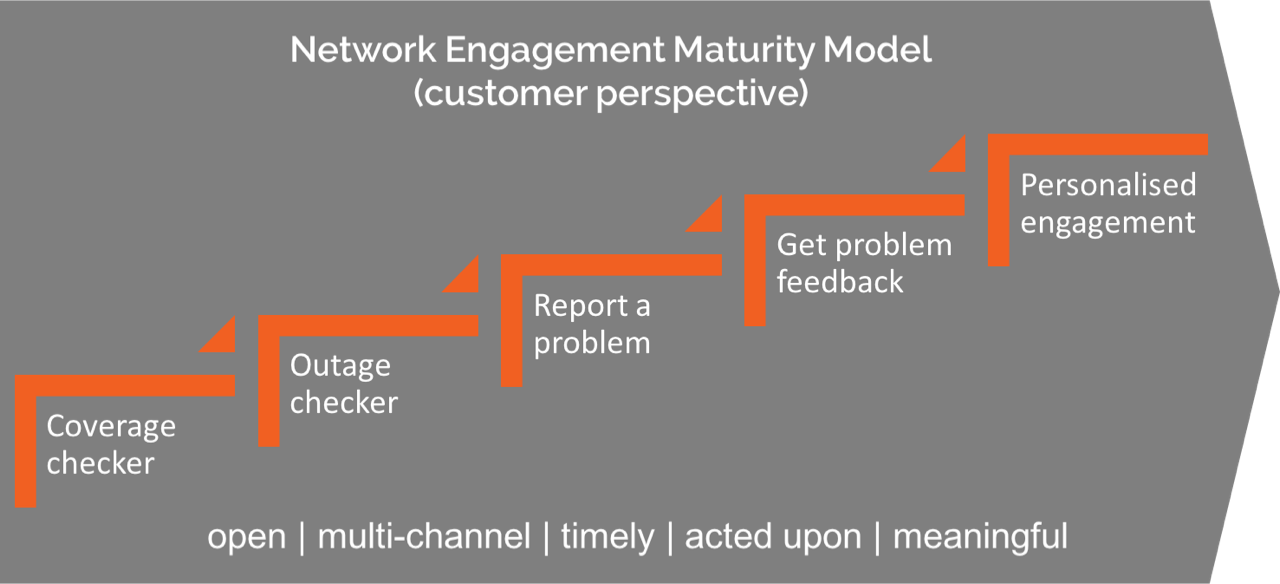For mobile operators, most people agree that the network is the primary thing that customers are paying for. Everything else is secondary and research backs that up, too.
It has been proven that nothing affects satisfaction more than customers’ perception of the network. It is no surprise, therefore, that great investment and thought is put into network improvement and the optimisation of infrastructure. It’s the bread and butter of mobile networks – and it has been for years.
What comes less naturally to many mobile operators is transparent, open engagement with their customers about that same thing – the network. It often feels like it is served in a “take it or leave it” manner. So, it makes good business sense for operators to develop better ways of engaging their customers about the network, says Peter Young, CEO at SpatialBuzz.
Unsurprisingly, we have not yet met a service provider who does not claim to be “customer centric”. So, we thought it might be useful to put together a simple network engagement maturity model to help gauge how well each operator is engaging their customers about the thing that matters most to them.
Step one is about being open enough to share the network coverage maps for the different technologies with the customer base. You might think that was fundamental, but in some countries, it is just not happening. You have the situation where customers are locked into long contracts and expected to pay for a service that is not even semi-quantified. We can’t think of another industry where this unjustifiable level of customer service exists. The excuses? They vary from “the regulator won’t allow it” to “our competitors don’t do it”.
The second step is about letting customers know when there is a problem with the network or the services that it supports. It is about being open and transparent. This is a real challenge to many operators, but it becomes easier when it is accepted that most people don’t particularly trust their operator. Or, to put it another way, being more open can only make it better.
Telecoms is ranked last of all industries in terms of customer satisfaction, according to the Institute of Customer Service. We encourage operators to surprise their customers and help develop trust by letting their customers know if there is a problem that might affect them. After all, trusting customers spend more money.
It is an open secret that most coverage maps can be a little bit optimistic. Operators know it and so do their customers. Very often, customers will know that there is a network problem before the operator. So, why not let your customers tell you when they are having an issue? That is where Step three comes in.
By engaging with customers about the thing they care most about, operators are showing that they really care. If the customer expectation is not being met, then that is a potential unhappy customer and one who will potentially churn. So, let’s give customers a channel to let their operator know. Then, let’s do something about it.
Step four is about avoiding customers having that “have I just communicated into a black hole” feeling. This usually happens for two reasons. The first one is because there really is a black hole – the operator does not have systems to deal with the customer feedback. The second is because, culturally, operators often forget to tell their customers about the good network fixes and work they are doing. The job is only done when the boxes have green lights, the problems have been fixed and you’ve let the customers know.
The final step is about making it more personal. That means understanding who the customer is and what customer experience they have had over a period of time, so that fixes can be prioritised better and customers are communicated with more meaningfully. Nobody likes to be treated like a number.
Operators can always be more open; link their various app, web, care and store channels better; do things faster; act more appropriately for the customer and communicate more meaningfully. Rising customer expectations highlights this perfectly.
So, how is your operator doing?
The author of this blog is Peter Young, CEO at SpatialBuzz
About the author:
Peter Young is the CEO at SpatialBuzz, a cloud-based customer experience analytics and service monitoring specialist. He has over 20 years of experience in the telecommunications industry in various leadership roles within product management, operations and sales.
Comment on this article below or via Twitter: @ VanillaPlus OR @jcvplus






